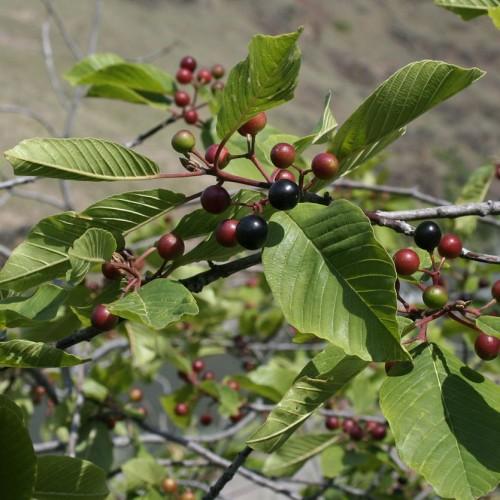
Cascara
Rhamnus purshiana
Cycle:
Perennial
Watering:
Frequent
Hardiness Zone:
Sun:
Full sun Partial sun Shade
Soil:
Sandy,Loamy,Clay,Humus,Rocky
Fruits:
Fruits Ready In
Edible:
Yes
Leaf:
Yes
Growth Rate:
Low
Poisonous To Humans:
Yes
Poisonous To Pets:
Yes
Drought Tolerant:
Yes
Care Level:
Medium
watering
Cascara should be watered deeply twice a month in the spring and summer. In the fall, water once a month, and in winter, water only once every 6-8 weeks. Before you water your cascara, check the soil to make sure it is dry up to 2 inches deep. When watering, use a drip irrigation or sprinkler so the soil can absorb the water slowly. Water your cascara deeply in order to reach the roots of the plant. This will help prevent shallow root growth and allow the cascara to absorb the water more easily.
sunlight
Cascara (Rhamnus purshiana) prefers full sun and requires at least 6 hours of direct sunlight per day in order to thrive and produce the best crop of fruit. Ideally, the plant should be exposed to the sun throughout the day, starting in the morning and continuing until mid-afternoon. During the summer months, it is necessary to provide additional shade in order to protect the plants from the intense afternoon sun. Cascara also appreciates partial shade in hotter climates, which can help to protect the plant's leaves and produce a larger harvest.
pruning
Cascara is a deciduous species best suited to pruning in late winter or early spring. Pruning should be kept to a minimum, because removing too much can reduce the desired cascading shape and lead to bushy growth. To maintain the cascading form, lightly prune the tips of the branches to shape them and encourage new growth. Pinching out excess growth between leaf nodes is also beneficial to keep the shrub shape neat and allow light into the center. To reduce overall size, remove 1-third of the oldest branches in late winter or early spring to promote better air flow.
